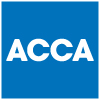3 min readMore and more businesses are discovering the benefits of benchmarking and of developing a plan of best practice. Would benchmarking your business be something that you would consider?
What is benchmarking?
In a nutshell, benchmarking involves measuring the performance of one’s business against that of others in similar markets. It has been described as “the practice of being humble enough to admit that someone else is better at something, and wise enough to try and learn how to match and even surpass them at it.”
A good benchmarking review will allow you to determine how well each aspect of your business is faring, discover areas where you need to improve, and develop a plan for achieving those improvements. Before you can decide where you are going, you need to know where you are now – and benchmarking can help you do this.
The advantages of benchmarking your business
The Government-funded Small Business Service cites ten key reasons for implementing a benchmarking process for small businesses:
- Improving productivity: businesses following action plans can expect productivity gains of up to 40% with a 10% increase relatively easy to achieve
- Beating the competition: learning about adaptability and change is a benchmarking essential
- Addressing growth issues: learn how to develop the right products and services at the correct pace
- Customised to fit all: businesses of all sizes can benefit from the generic principles of benchmarking
- An holistic approach: it is both qualitative and quantitative, ensuring more accuracy in developing a whole picture of your business.
- Opens minds to new opportunities: whilst the results can make uncomfortable reading, the process usually raises new challenges for businesses
- High quality of data: it allows direct statistical comparisons to be made with competitors
- Helps businesses attract funding: in some areas of the UK, it has been used as part of the bidding process for grant aid
- Leads directly to an action plan: Rather than simply highlight problem areas, it undertakes a strong review of turnover and profitability
- Maintain client relationships: by being an ongoing process, benchmarking keeps clients in contact with advisers over the longer term.
Commitment to consider
Benchmarking takes time and energy and you need to commit the necessary resources and empower the right people. If you restrict the process to a few key areas to start with you will soon come to see it as an investment rather than an expense.
Customer impact
Benchmarking works only if you can measure the activity in some way and compare like with like. You might start with areas that directly impact the customer such as quality of product, accuracy of invoicing, timeliness of delivery, or speed of service.
The best way to gather this information is to ask your customers directly through questionnaires and other feedback mechanisms. Analysing complaints and warranty claims will also reveal useful data in these areas.
Internal processes
You might also begin to benchmark internal processes such as stock levels or stock turnaround times, quantity of waste or rejects generated, cost of sales or sales per employee.
You might not have this data ready to hand and some adjustments might need to be made to your management accounts to enable you to monitor these areas.
Smaller firms especially can have difficulty in finding the equivalent information about other firms with which to make comparisons, especially if the other firm is a competitor, But you do not need to source the data directly from the other firm. There is a surprising amount of such information available in magazines and newspapers, trade association reports, and various publicly accessible databases. Calculating and measuring your business performance can give insights in to benchmarking a business.
Creative thinking
To benchmark successfully, however, it is not always necessary to compare your performance with that of a competitor. Comparing certain procedures with businesses in parallel industries or even in completely unrelated industries can often be very revealing and lead to creative, lateral thinking, a key element in the process of innovation.
Often the most useful benchmarking is achieved by comparing procedures between different parts of your own business. Besides facilitating continuous improvement, this also helps to create a culture of settling for nothing but the best within your organisation.
If you would like to discuss any of the topics in this update or how Loucas can assist you in growing your business please do not hesitate to contact us.






